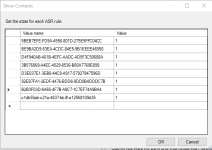Let's look at two methods of theft:
- Sneak into the house with weapons, kill the host, and steal what you want.
- Sneak into the house, avoid the family members, and steal what you want.
The first method is very noisy, unpredictable, and very unpopular among professional thieves. The same is true for the method from the OP (as the primary infection vector). Although the first method is possible, most people do not use additional protection to prevent it.

One example of such prevention would be installing the weapon detector and do not allow entering people with weapons. This would be analogous to use script blocking, SmartScreen, etc.
The situation is different when professional criminals want to attack the house with strong protection to get something very precious (worth killing). They can use another strategy:
Sneak into the neighbor's house which is not protected so well, and
kill the host. Observe the target house, gather information, concentrate more people and more weapons. Use the weak point in the security to attack the target house at a suitable moment.

This method is analogous to the lateral movement in Enterprises.





